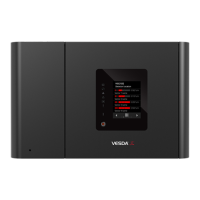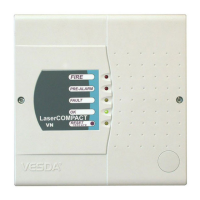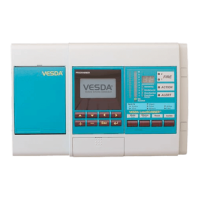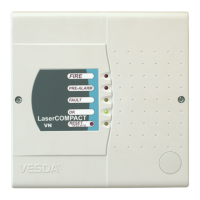Open-area Smoke Imaging Detection
(OSID) by Xtralis is a new innovation
in projected beam smoke detection
technology. By using advanced dual
wavelength projected beams and
optical imaging technology for early
warning smoke detection, OSID
provides a low-cost, reliable and
easy-to-install solution that overcomes
typical beam detection issues such as
false alarm incidents and alignment
difculties.
Unique Detection Technology
The OSID system measures the level of smoke entering beams of light projected over
an area of protection. A single OSID Imager can detect up to seven Emitters to provide
a wide coverage area. Two innovations in smoke detection technology have been
developed for the revolutionary OSID smoke detector:
Dual Wavelength Particle Detection
The beam projected from each Emitter contains a unique sequence of ultraviolet (UV)
and infrared (IR) pulses that are synchronised with the Imager and enable the rejection
of any unwanted light sources.
By using two wavelengths of light to detect particles, the system is able to distinguish
between particle sizes. The shorter UV wavelength interacts strongly with both small
and large particles while the longer IR wavelength is affected only by larger particles.
Dual wavelength path loss measurements therefore enable the detector to provide
repeatable smoke obscuration measurements, while rejecting the presence of dust
particles or solid intruding objects.
Optical Imaging with a CMOS Imaging Chip
An optical imaging array in the OSID Imager provides the detector with a wide viewing
angle to locate and track multiple Emitters. Consequently, the system can tolerate a
much less precise installation and can compensate for the drift caused by natural shifts
in building structures.
Optical ltering, high-speed image acquisition and intelligent software algorithms also
enable the OSID system to provide new levels of stability and sensitivity with greater
immunity to high level lighting variability.
Operation
Status information (Fire Alarm, Trouble and Power) is communicated through the
Imager via Status LEDs, dedicated Trouble and Alarm relays, and the Remote Indicator
interface. Specic Trouble (Fault) conditions are identied through coded ashes of the
Trouble LED.
An internal heating option is also provided on the Imager to prevent condensation on
the optical surface, and a reset input enables an external signal to reset the device.
Simple Installation and Maintenance
The OSID system consists of up to seven Emitters, for the 45° and 90° Imager units,
located along the perimeter of the protected area, and an Imager mounted opposite.
Each component can be mounted directly to the surface or can be secured with the
supplied mounting brackets. Battery powered Emitters with up to ve years battery life
are also available to reduce installation time and cost.
Features
• Maximum detection range of
150 m (492 ft) for the OSI-10
• Status LEDs for Fire, Trouble and Power
• High false alarm immunity
• Dust and intrusive solid object rejection
• Easy alignment with large adjustment
and viewing angles
• No need for precise alignment
• Tolerant of alignment drift
• Automatic commisioning in under
ten minutes
• Simple DIP switch conguration
• Dual wavelength LED-based smoke
detection
• Simple and easy maintenance
requirements
• Conventional alarm interface for
straightforward re system integration
• Three selectable alarm thresholds
Listings/Approvals
• UL
• ULC
• FM
• AFNOR
• CE Mark
• VdS
• ActivFire
• BOSEC
• Major Agency Approvals pending
OSID Smoke Detection













